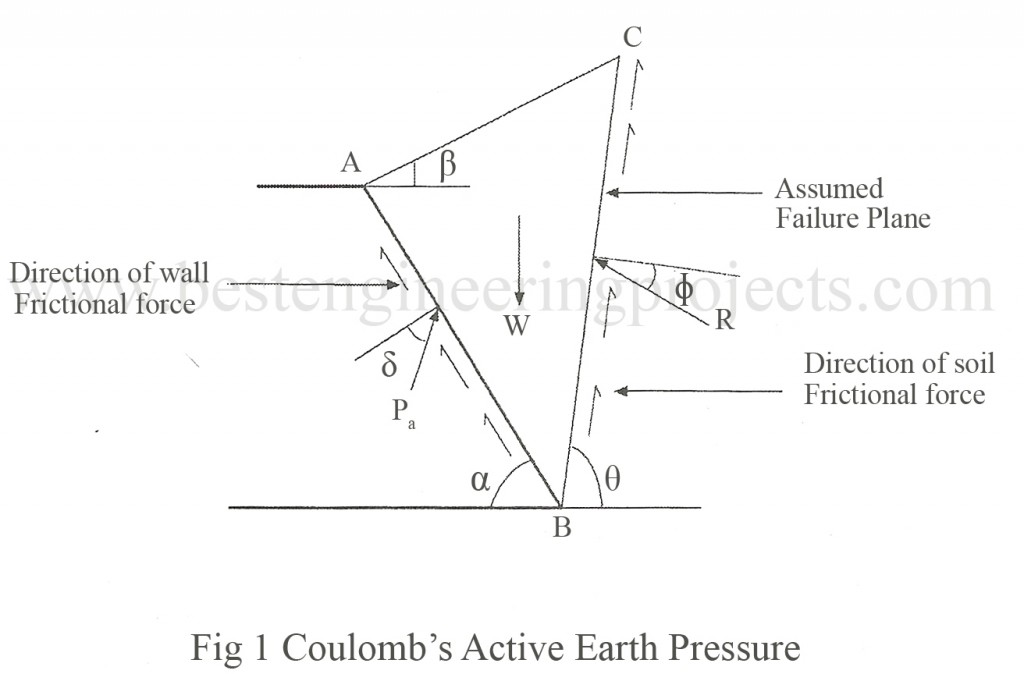Coulomb’s made the following assumptions in the development of his theory and hence it is called Coulomb’s Wedge Theory.
The assumptions made by Coulomb while giving his theory was:
- The soil is isotropic and homogeneous.
- The surface of rupture is a plane.
- The failure wedge is a rigid body.
- There is friction between and the wall.
- Back of wall need not be vertical.
- Failure is two dimensional.
- The soil is cohesion-less.
- Coulomb’s equation of shear strength is valid.
Coulomb made his derivation based on limit equilibrium approach.
Derivation of Active Case for Coulomb’s Wedge Theory
Figure 1 below shows the cross section of a retaining Wall. Equilibrium analysis of failure wedge ABC involves:
- Weight of wedge ABC (magnitude and direction known)
- Pa (direction known, magnitude unknown)
- R (direction known, magnitude unknown)
Hence, from the triangle of forces can be drawn and Pa can be determined.
Calculation of Weight of wedge ABC
From Triangle ABC,
Area of Triangle ABC =
Therefore,
Again,
…….(1)
Triangle of Forces for W, Pa and R | Coulomb’s Wedge Theory
From the sine rule we can write,
……..(2)
Substituting the value of W from the equation (1) into (2) we get,
In order to get the maximum value of Pa,
Where,
Note:
When, (leveled backfilled),
(no wall friction), then
. The point of application of Pa is at a distance of H/3 above the base of the wall.



My text book had nothing about calculating the weight of the wedge… This web page is a life saver!!!!